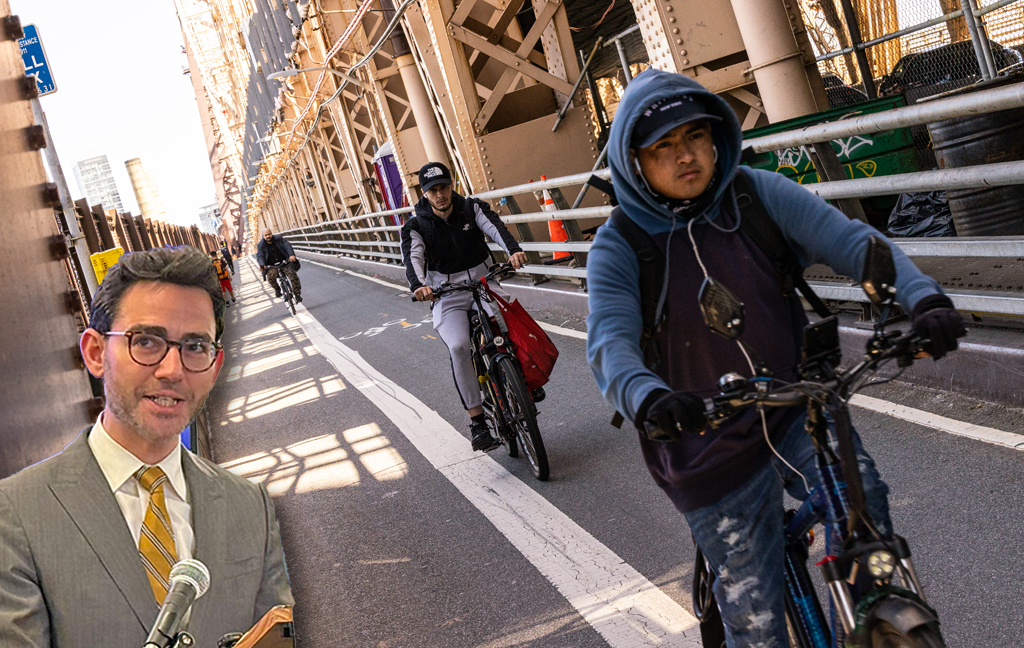A new study from the Institute for Transportation and Development Policy attempts to measure the potential of bikes and e-bikes to reduce greenhouse gas emissions.

ITDP's conclusion, in short: Bicycling could help cut carbon emissions from urban transportation 11 percent.
The authors calculated the carbon emissions reduction that could result if cities around the world make a strong, sustained commitment to promoting bicycle travel.
In a scenario where 14 percent of travel in the world's cities is by bike or e-bike in 2050, carbon emissions from urban transportation would be 11 percent lower than a scenario where efforts to promote sustainable transportation sidestep bicycling.
The ITDP scenario calls for 11 percent of urban mileage by bike by 2030 before hitting 14 percent in 2050. For many big American cities where bicycling accounts for a small share of total travel, that may sound like a high bar -- and that was part of the point. The ITDP targets will require a significant public policy commitment. But the goals are achievable and aren't as daunting as they might seem, the authors say.
Already, ITDP estimates about 6 percent of miles traveled in world cities are by bike or e-bike. More than half of those bicycling miles, however, come from just a few countries, including Japan, China, the Netherlands, and Denmark.
In general, bicycling's share of travel is flat or falling in developing countries. And in the U.S. and Canada, bicycling only accounts for about 1 percent of non-recreational trips.
Under the scenario described by ITDP, bicycling would rise to about 11 percent of miles traveled in American and Canadian cities by 2050. In countries like China where the rate is already above that level, it would be as high as 25 percent.
In order to achieve that level of cycling, cities around the world would need to make substantial changes to their policies and infrastructure, ITDP says, including:
- Rapidly developing large-scale networks of bike infrastructure.
- Implementing bike-share, with an emphasis on connections to transit.
- Revising laws to protect cyclists and pedestrians.
- Investing in walking and transit.
- Coordinating regional land use planning with transportation investments.
- Ending subsidies for driving, like parking minimums and fuel subsidies.
- Instituting congestion pricing.
- Dedicating driving fees to sustainable transportation.
The report builds on previous research from ITDP measuring the potential impact of dramatically expanding the use of sustainable transportation in U.S. cities. That study found shifting reliance from cars to bikes, buses and walking, could reduce emissions from transport in cities by 40 percent. The new report was undertaken after bike advocates in Europe and elsewhere responded that the previous study may have underestimated the share of trips that could be shifted to bicycling.
Factoring in the greater potential for mode shift to bikes, ITDP estimates that the total reduction in urban transportation emissions by 2050 could reach 50 percent if cities aggressively pursue policies to promote sustainable modes. The upcoming United Nations Climate Change Conference (COP 21) in Paris "provides an excellent opportunity to move global policy toward supporting this scenario," ITDP concludes.






